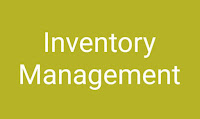Inventory Management (Raw Materials)
 |
| Inventory Management |
Inventory management itself is divided into 2, those whose demand is independent, where the nature of the demand for raw materials does not depend on the production of other goods, and which is dependent, where the nature of the demand for goods depends on the amount of a product made.
The main things that need to be studied in the context of a feasibility study are
1. Determination of Order Amount
That is to say simply, determine the number of orders each time an order can use a variety of models. Like the Economic Order Quantity model, as well as other operation-research models
2. Safety Stock
Safety Stock means that in simple terms, the determination of the amount of goods as inventory for security needs to be analyzed so that it is not excessive or deficient. Two models for analyzing these safety inventory problems are the Expected Value model and the normal Curve model
3. Inventory System
Inventory System means that in this system is a way to determine how and when a purchase is made to fill inventory. Basically there are two ways, namely the reorder point system and the periodic system
4. Material Requrement Planning
Material Requrement Planning means that the material planning system, in contrast to the Economic Order Quantity (EOQ) system that is reactive, is more proactive, so planning ahead is the point.
The advantage of the Material Requrement Planning system is that it reduces errors in thinking about needs because the needs of goods are based on planned production quantities, provides information for plant capacity planning, and can always improve inventory quantities and quantities of material orders
0 Response to "Inventory Management (Raw Materials)"
Post a Comment